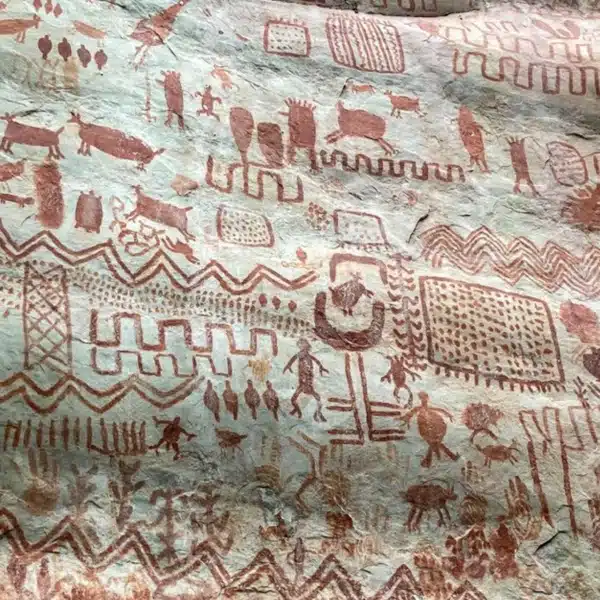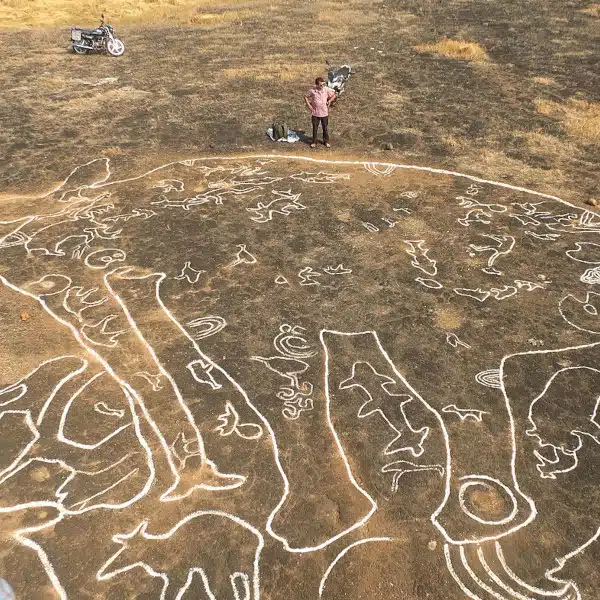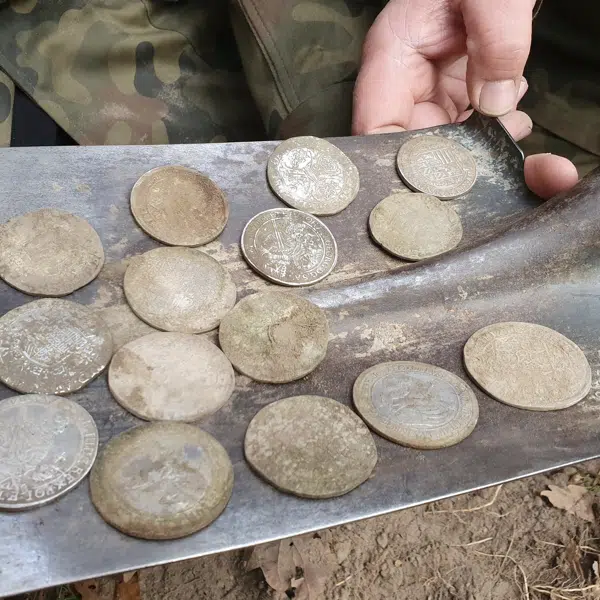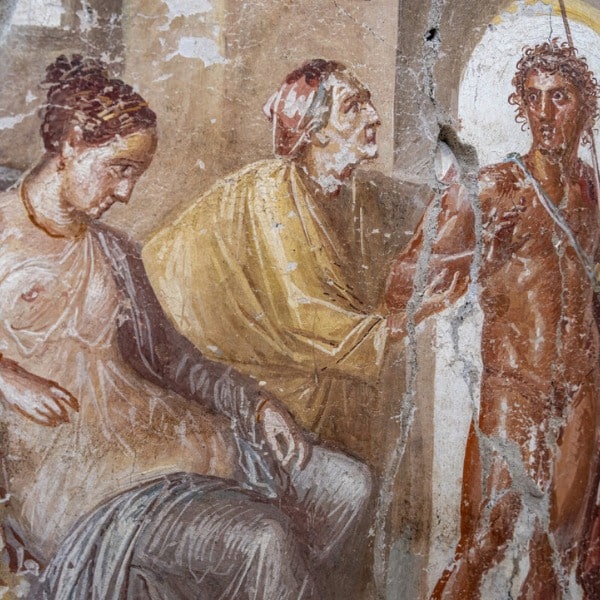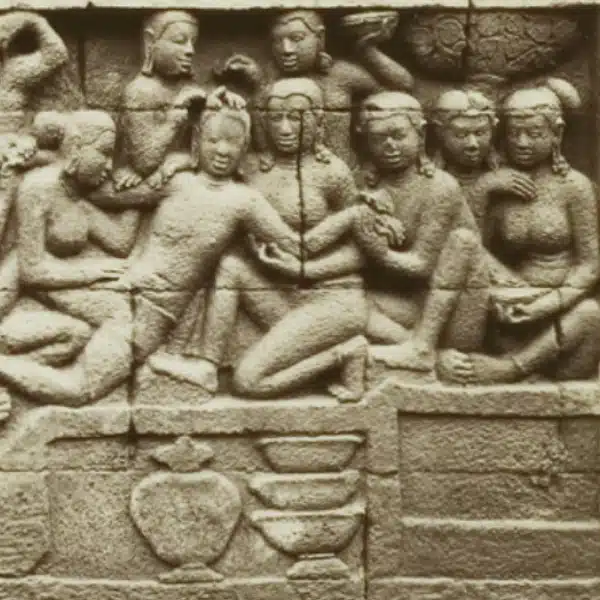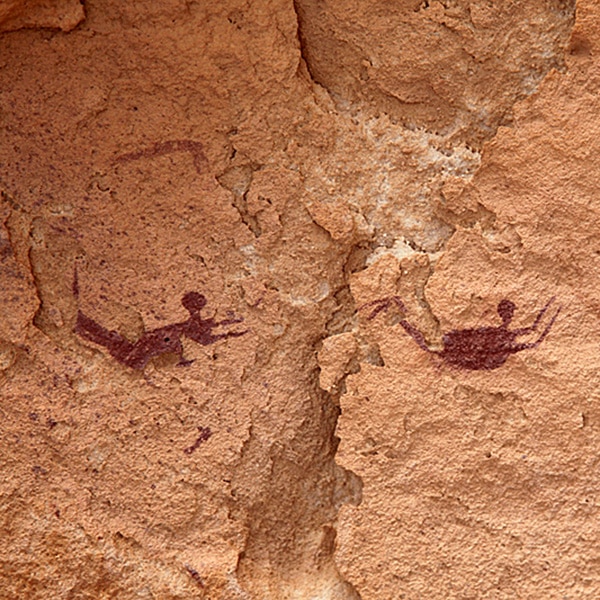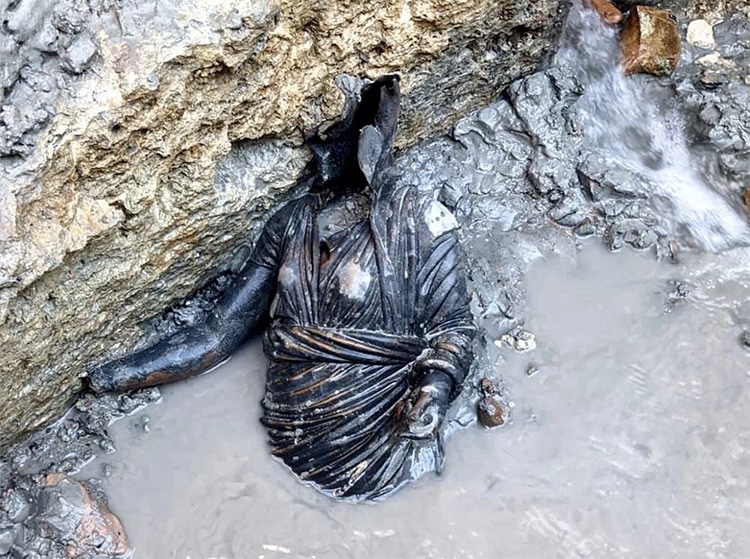
A bronze statue partially submerged in the thermal bath. (Photo: Italian Ministry of Culture)
The Romans were known for their bath houses, which served as centers of social, health, and ritual significance. Studying these sites, researchers can peer into the lives of ancient civilizations. Recently, archeologists mucking around in the remains of an ancient bath house near Siena, Italy, were investigating a fascinating period of Italian history as the land transitioned from Etruscan to Roman rule. The routine dig turned into a major moment in archeological lore with the discovery of 24 perfectly preserved 2,300-year-old bronze statues. This treasure trove—hidden for millennia—has rewritten a chapter in ancient history.
The dig at the baths in the small town in San Casciano dei Bagni began in 2019. However, in October 2022, researchers noticed fragments of human sculptures and metallic coins beginning to appear in the ruins. The mud of the baths soon revealed 24 incredible bronze statues. A nude man standing contrapposto, several busts, and a be-robed woman emerging from the water. The statues are the likenesses of Hygieia, Apollo, and other Greco-Roman gods. They bear inscriptions in Latin and Etruscan and indicate the names of Etruscan families.
The statutes are from the 2nd century BCE through the 1st century CE, when Tuscany was passing through military conflict from Etruscan to Roman control. Despite the conquering Romans attempts to supplant Etruscan culture, the statues and their inscriptions indicate coexistence. “This discovery rewrites the history of ancient art,” historian Jacopo Tabolli adds in a statement. “Here, Etruscans and Romans prayed together.” The statues were likely submerged on purpose into the mineral baths as part of an unknown ritual.
The water of the baths protected the statues from oxygen which can encourage bacterial damage. The baths were in use through the Christianization of the failing Roman Empire in the 5th century CE. “One of the last ones [of the statues] particularly struck me for the quality of the details,” Chiara Fermo, an archaeologist at the University of Siena, tells La Repubblica. “It is a female statue, entirely bejeweled, with very detailed necklaces and earrings. An example of what a woman of the time must have been like.”
These magnificent statues are currently being restored, and will soon be displayed in a museum in San Casciano. Tabolli notes that it is “the largest deposit of bronze statues of the Etruscan and Roman age ever discovered in Italy and one of the most significant in the whole Mediterranean.” This monumental find will go down in archeological lore as insight into a world in rapid transition over two millennia ago.
Archeologists discovered 24 incredibly preserved bronze statues in the warm groundwaters of ancient baths in Siena, Italy.
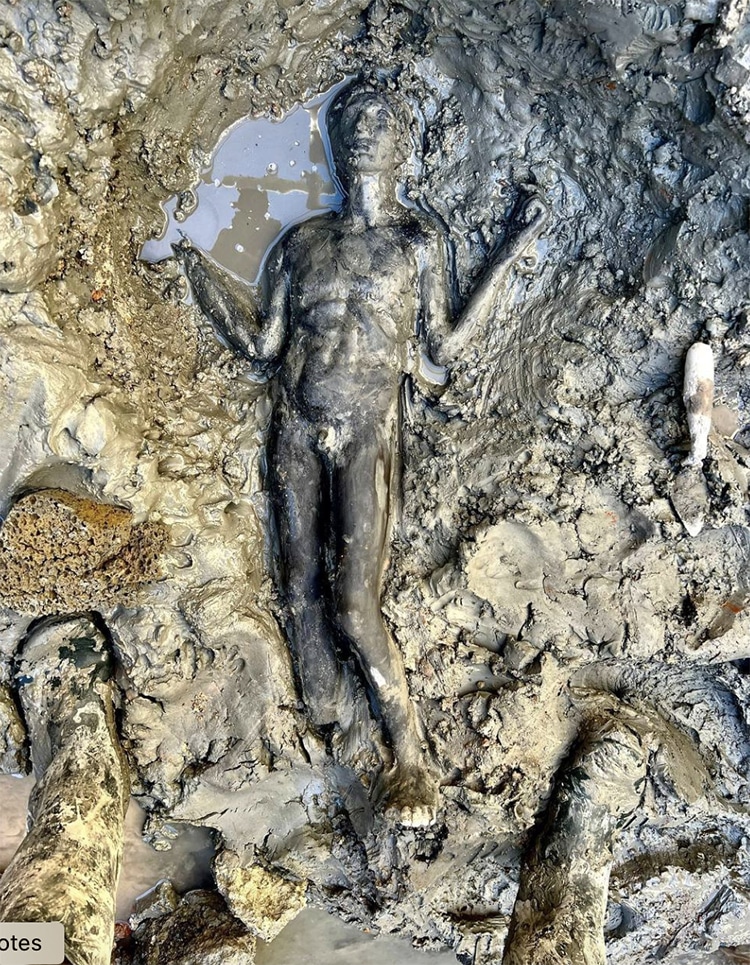
Photo: Italian Ministry of Culture
The statues are 2,300 years old.
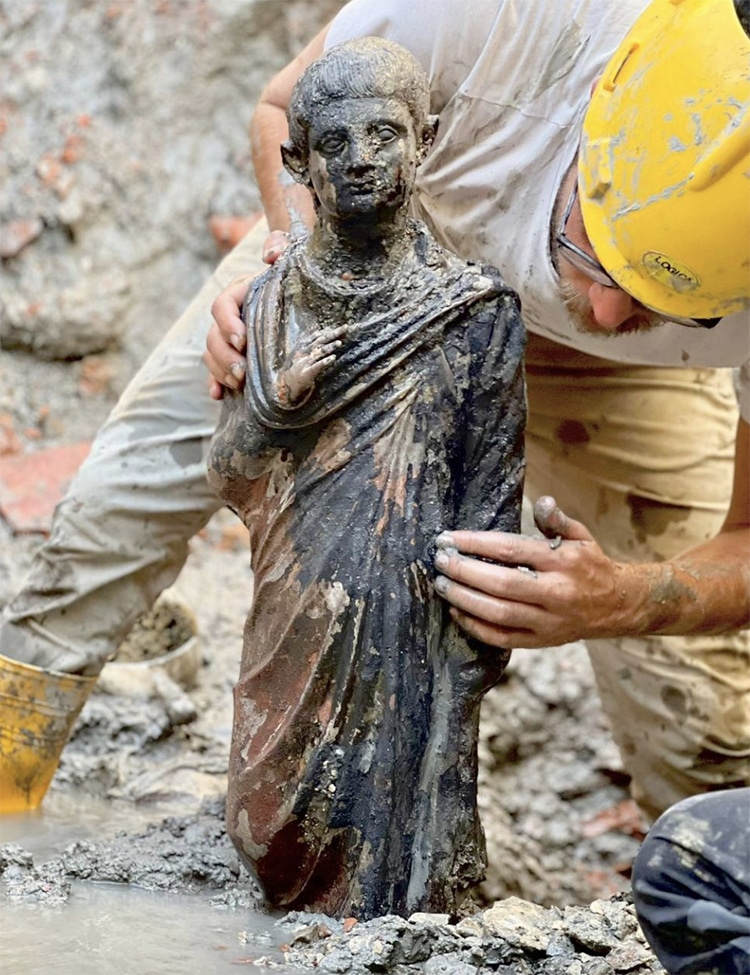
Photo: Italian Ministry of Culture
They originate in a transitionary time when Etruscan rule was giving way to the powerful sway of the Roman Empire.
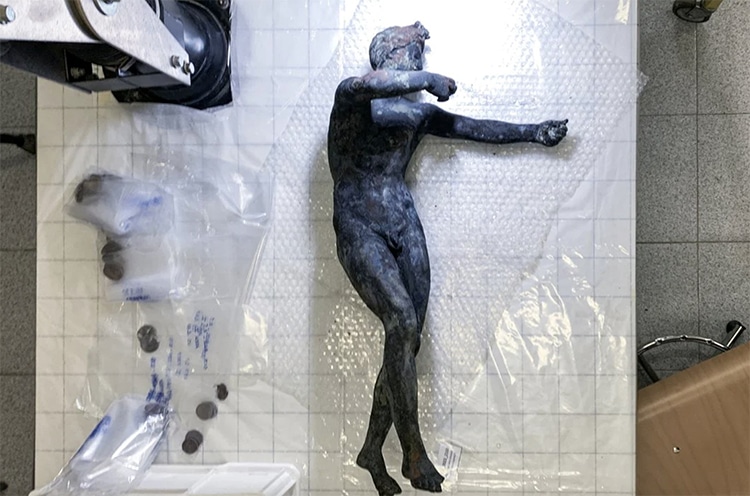
Photo: Italian Ministry of Culture
The quantity, quality, and details of the statues make the trove an unprecedented find.
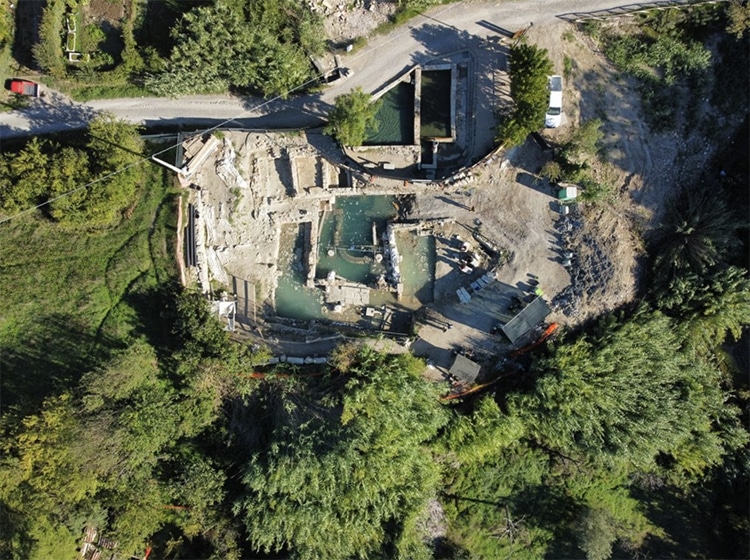
Photo: Italian Ministry of Culture
h/t: [Smithsonian Magazine]
Related Articles:
Art History: Ancient Practice of Textile Art and How It Continues to Reinvent Itself
Sister Duo Weaves Textured Wall Hangings Inspired by Australian Landscapes
How to Crochet: Learn the Basics of This Time Honored Handicraft
Artist Fills Forest with Life-Size Sculptures Made from Woven Rods of Willow











































































